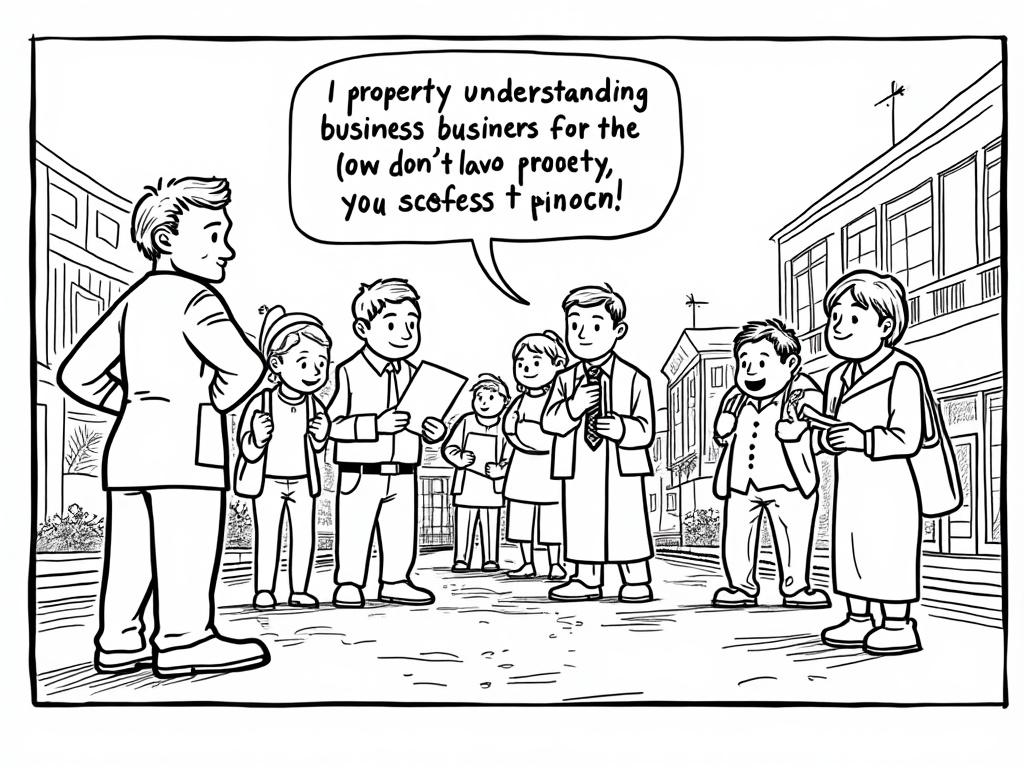
Investing in Real Estate Tax Liens: Earning Returns from Property Taxes
Reading time: 12 minutes
Table of Contents
- Understanding Tax Lien Investments
- The Investment Process Explained
- Returns, Risks, and Market Realities
- Proven Investment Strategies
- Real-World Success Stories
- Implementation Guide
- Frequently Asked Questions
- Your Investment Roadmap Forward
Understanding Tax Lien Investments
Ever wondered how some investors earn 8-36% annual returns while helping local governments collect unpaid property taxes? Welcome to the world of tax lien investing—a strategy that transforms municipal revenue challenges into profitable opportunities.
Here’s the straight talk: Tax lien investing isn’t about becoming a landlord or flipping houses. It’s about purchasing the debt that property owners owe to local governments, creating a win-win scenario where you earn guaranteed returns while municipalities get immediate cash flow.
The Basic Mechanics
When property owners fail to pay their annual property taxes, local governments place a tax lien on the property. Rather than waiting years for collection, these municipalities sell these liens to investors through public auctions. You’re essentially stepping into the government’s shoes as the creditor.
Key Investment Insights:
- Government-backed security with legal priority over mortgages
- Fixed interest rates set by state legislation
- Redemption periods typically ranging from 6 months to 3 years
- Potential property acquisition if taxes remain unpaid
Quick Scenario: Imagine a $3,000 tax lien in Arizona earning 16% annually. If the property owner redeems within one year, you’ve earned $480 on your investment—a return many traditional investments can’t match in today’s market.
The Investment Process Explained
The tax lien investment process follows a structured, government-regulated framework that varies by state. Let’s break down the essential steps that turn unpaid property taxes into investment opportunities.
State-by-State Variations
Not all states operate tax lien programs—some use tax deed sales instead. Currently, 28 states plus Washington D.C. offer tax lien certificates, with interest rates and redemption periods varying significantly based on local legislation.
| State | Annual Interest Rate | Redemption Period | Auction Type | Investor Advantage |
|---|---|---|---|---|
| Arizona | 16% | 3 years | Interest rate bid down | High fixed returns |
| Florida | 18% | 2 years | Interest rate bid down | Excellent returns |
| Illinois | 36% | 2.5 years | Premium bid | Highest potential returns |
| New Jersey | 18% | 2 years | Premium bid | Strong market activity |
| Texas | 25% | 2 years | Premium bid | Large market size |
The Auction Process
Tax lien auctions operate differently from traditional real estate sales. Most occur annually, though some jurisdictions hold multiple sales throughout the year. Here’s what successful investors understand about the bidding process:
Bidding Mechanisms:
- Interest Rate Bid Down: Investors compete by accepting lower interest rates
- Premium Bidding: Investors pay above the tax amount, with premiums returned upon redemption
- Rotational Systems: Some areas use lottery-style selection for fairness
Returns, Risks, and Market Realities
Let’s address the elephant in the room: While tax lien investing offers attractive returns, it’s not without complexities. Understanding both the profit potential and inherent risks separates successful investors from those who struggle.
Return Analysis
According to the National Tax Lien Association, approximately 95-98% of tax liens are redeemed by property owners, meaning investors typically receive their principal plus interest rather than acquiring property. This redemption rate varies by location and economic conditions.
Tax Lien Return Comparison by State
Risk Factors to Consider
Tax lien expert Ted Thomas notes, “The biggest mistake new investors make is not understanding the due diligence required before bidding. This isn’t passive income—it’s active investing that demands research and market knowledge.”
Primary Risk Categories:
- Property Condition: Environmental issues, structural problems, or worthless land
- Legal Complications: Bankruptcy filings, IRS liens, or title defects
- Market Competition: Experienced investors driving down returns in popular areas
- Liquidity Constraints: Capital tied up for redemption periods
Proven Investment Strategies
Successful tax lien investors don’t rely on luck—they follow systematic approaches that maximize returns while minimizing risks. Let’s explore the strategies that separate profitable investors from those who struggle.
The Conservative Approach
This strategy focuses on liens against improved residential properties in stable neighborhoods. Conservative investors typically target:
- Single-family homes in middle-class areas
- Properties with manageable tax amounts ($500-$5,000)
- Areas with strong economic fundamentals
- Liens with clear title histories
The trade-off? Lower competition often means accepting bid-down interest rates, but redemption rates exceed 98% in these scenarios.
The Value Play Strategy
More aggressive investors target liens on higher-value properties where the tax amount represents a small percentage of property value. This approach requires:
- Extensive property research and valuation
- Understanding of local real estate markets
- Larger capital requirements
- Willingness to potentially acquire properties
Real-World Success Stories
Case Study 1: The Arizona Retirement Strategy
Margaret Chen, a retired teacher from Phoenix, began tax lien investing in 2019 with $50,000. She focused exclusively on Arizona liens, attracted by the state’s 16% fixed interest rate and investor-friendly laws.
Her Approach:
- Purchased 15-20 liens annually ranging from $800-$3,500
- Focused on suburban residential properties
- Maintained detailed spreadsheets tracking redemption dates
- Reinvested returns to compound growth
Results: Over four years, Margaret averaged 14.2% annual returns (accounting for bid-down scenarios), growing her portfolio to $89,000. Most importantly, she achieved predictable income that supplemented her retirement without the headaches of rental property management.
Case Study 2: The Illinois High-Yield Approach
James Rodriguez, a Chicago-based contractor, leveraged his construction knowledge to target liens in Cook County, Illinois. Understanding property values and renovation costs gave him confidence to pursue higher-risk, higher-reward opportunities.
Strategy Highlights:
- Targeted liens on properties he could potentially improve
- Accepted the possibility of property acquisition
- Focused on areas with gentrification potential
- Used professional networks for property research
Outcome: In three years, James earned returns averaging 28% annually. While two liens resulted in property acquisitions, his construction expertise allowed him to profitably renovate and sell both properties, significantly boosting overall returns.
Implementation Guide
Ready to explore tax lien investing? Here’s your practical roadmap for getting started, based on lessons learned from successful investors.
Step 1: Education and Research Phase
Before investing a single dollar, invest time in understanding your target markets. This isn’t optional—it’s the foundation of successful tax lien investing.
Essential Research Tasks:
- Study your state’s specific tax lien laws and procedures
- Attend local tax lien auctions as an observer
- Connect with county tax collectors for procedural information
- Join investor groups and online forums for market insights
Step 2: Capital Preparation
Most successful tax lien investors recommend starting with at least $10,000-$25,000 to achieve proper diversification. Remember, this capital will be tied up for the redemption period.
Step 3: Technology and Tools
Modern tax lien investing requires technological efficiency. Consider investing in:
- Property research software (like PropertyRadar or BiggerPockets)
- Spreadsheet templates for tracking investments
- Online auction platforms where applicable
- Mobile apps for on-site property evaluation
Frequently Asked Questions
What happens if I win a tax lien at auction but later discover the property has serious issues?
Unfortunately, tax lien sales are typically “buyer beware” situations with no recourse for property defects. This is why pre-auction due diligence is crucial. However, you still hold a legal claim against the property owner for the tax debt plus interest, regardless of property condition. If the property owner doesn’t redeem, you may need to decide whether to pursue foreclosure or write off the investment. This scenario underscores the importance of thorough research and conservative bidding strategies for new investors.
How do I research properties before tax lien auctions?
Effective property research involves multiple steps: Start with county assessor records to verify property details and ownership. Use online mapping tools and street view to assess property condition and neighborhood quality. Check for additional liens, mortgages, or legal issues through title companies or courthouse records. Visit properties in person when possible, noting accessibility, condition, and surrounding area. Research recent comparable sales to understand property values. Many successful investors spend 2-3 hours researching each potential lien purchase, treating this process as the foundation of their investment strategy.
Can I invest in tax liens through my IRA or other retirement accounts?
Yes, tax liens can be excellent investments for self-directed IRAs, potentially providing tax-advantaged growth at attractive interest rates. However, you’ll need a self-directed IRA custodian who allows alternative investments, and you must follow strict IRS rules about prohibited transactions. You cannot personally benefit from the property (like living in it if acquired through foreclosure), and all expenses and income must flow through the IRA. Many investors find the tax-deferred or tax-free growth potential makes the additional complexity worthwhile, especially for long-term retirement planning strategies.
Your Investment Roadmap Forward
Tax lien investing represents a unique intersection of government fiscal policy and private investment opportunity. As municipalities increasingly seek immediate cash flow solutions and investors search for yield in low-interest environments, this market continues evolving with new technologies and expanded accessibility.
Your Next Steps:
- Week 1-2: Research tax lien laws in your target states and identify upcoming auction dates
- Week 3-4: Attend a local auction as an observer to understand the process firsthand
- Month 2: Develop your research process and create property evaluation criteria
- Month 3: Make your first small investments to gain practical experience
- Ongoing: Build relationships with other investors and continuously refine your strategy
The convergence of digital property research tools and online auction platforms is democratizing access to tax lien investments, while institutional investors are bringing more competition and efficiency to traditional markets. This evolution means individual investors must become more sophisticated and strategic to maintain competitive advantages.
As you embark on this investment journey, remember that tax lien investing rewards patience, research, and systematic approaches over speculation. The question isn’t whether you can earn attractive returns—it’s whether you’re prepared to do the work required to earn them consistently.
Are you ready to transform your understanding of municipal finance into a strategic investment advantage, or will you remain on the sidelines while others profit from this government-backed opportunity?

Article reviewed by MDavid Cohen, Chief Strategy Officer | Architect of Scalable Growth for Tech Startups, on July 7, 2025


